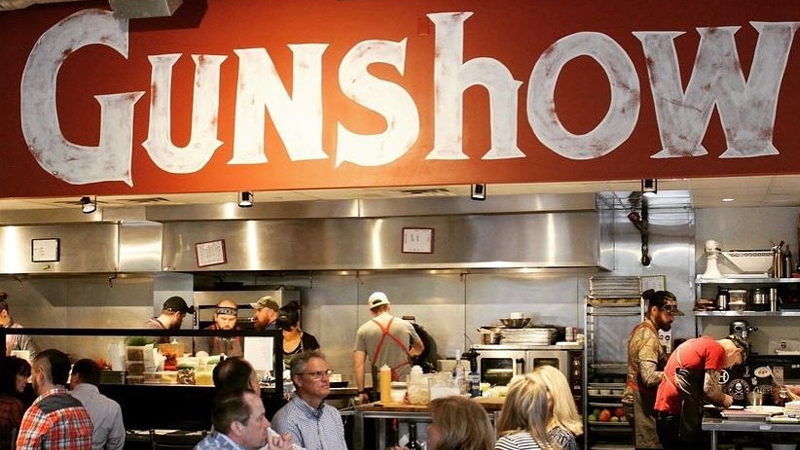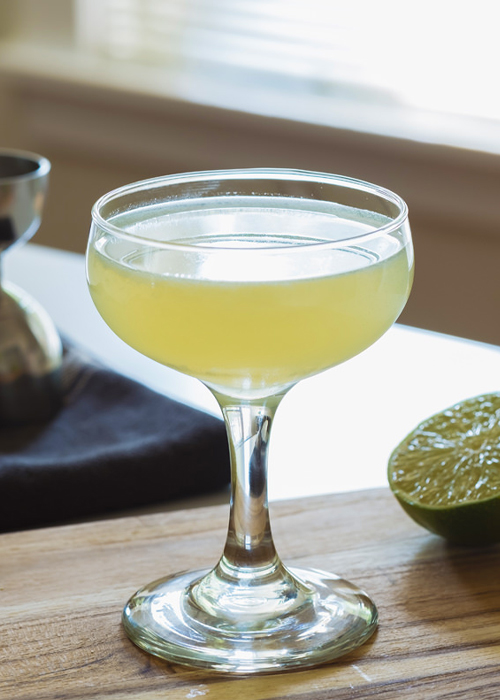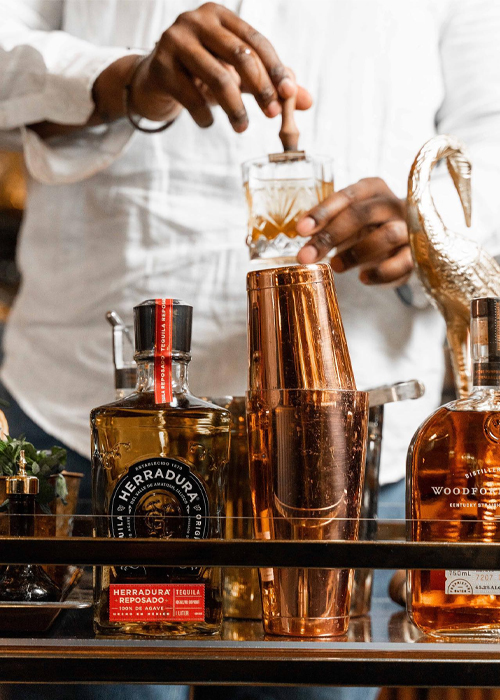Tableside cocktails made a big splash in the 2010s. The novelty of venues like Brooklyn’s Maison Premiere breaking out elegant barware to craft classic drinks on mobile carts captured our attention. We oohed. We aahed.
Fast forward to the present, and the trend has outgrown its novelty phase. It’s garnered enough staying power to shed its trend status. Tableside cocktails are here to stay, and not just because they turn heads. All these years later, it’s safe to call it a service tactic with a surprisingly versatile purpose.
Same Concept, Different Approaches
When preparing foods like Caesar salad and bananas foster tableside reached the height of its popularity in the mid-20th century, its domain was the sector of fine dining where people sat at white tablecloth-draped tables, ate with suits and dresses on, and drank with pinkies out. Tableside cocktails can effortlessly lean into this aesthetic, but they’re not exclusive to it. In fact, they can sometimes be used as an antidote for such affectations.
Don’t Miss A Drop
Get the latest in beer, wine, and cocktail culture sent straight to your inbox.

In Atlanta, fine dining restaurant Gunshow uses its roving cart as a deliberate attempt to shatter old-school convention. “When [owner/executive chef] Kevin Gillespie opened Gunshow, his family felt that fine dining had become too prim and proper,” explains Gunshow lead bartender Jeramie Eubanks. “The idea behind the mobile bar cart was to make our cocktail program more approachable. We’re always trying to push the boundaries on what a cocktail can be by using unique and hyper-seasonal ingredients; the bar gives us the opportunity to talk to our guests about what we’re doing.”
Of course, the cocktail cart can be used to deliver an extra dose of panache in restaurants that adhere to a more traditional upscale affair. It also affords them the chance to elevate an experience beyond the concept’s inherent showmanship. At Los Angeles’s two Michelin-starred restaurant Providence, bar director Kim Stodel uses the cart and a collection of high-end tools to make pricey cocktails that showcase the venue’s collection of aged and rare spirits. His Agave Last Word, for example, is a Last Word riff made with aged green Chartreuse V.E.P. Verte and Luneta Mexicano Avage Spirit, a liquor with an annual production run of just 300 bottles. The service carries the potential for pretension on paper, but Stodel sees it as an opportunity to connect with diners and their thoroughly modern sensibilities. “Everyone films the process with their cameras and posts it on their social media, which is fine by us,” Stodel says. “They’re paying to have this tailor-made experience for them, so we want to make sure they find it fun and engaging. The last thing we want to do is be too stuffy.”
Gunshow and Providence both offer tableside dining experiences, so drinks from a bar cart are a natural extension of this practice. Understory in San Diego, on the other hand, does not. It doesn’t even offer dining. The breezy, colorful bar — which ironically is part of a food hall — only offers a handful of pre-made bar snacks like potato chips and smoked almonds for guests to munch on as they sit within the forest-themed space. The absence of food places its tableside drinks under a form of scrutiny that restaurants may not possess, as guests gravitating here aren’t dropping by to primarily dine. Its bar team responds in kind by crafting singular drinks featuring special ingredients like tequila, bourbon, mezcal, and Cointreau barrel-aged in house for 30 days. “We feel like we have a bit of an advantage since we don’t have to also focus on food service,” says Understory general manager Chance Curtis. “Our job is just to concentrate on cocktails and experience. That said, we’d be remiss if we didn’t put all our efforts into making both great.”

More Than Making a Drink
Eubanks only has 40 minutes to impress every diner at Gunshow’s opening dinner service with his cocktails. In a way, he has no choice; Gunshow doesn’t have a dedicated bar for patrons to sit. It has a bar kitchen to help make some cocktail offerings and the rest of the drinks beyond the first round, but Eubanks and his rolling cart of spirits, modifiers, garnishes, and tools is how Gunshow makes its crucial first impression.
“We seat about 60-70 guests from 6 p.m. to 6:30 p.m.,” Eubanks said. “The cart needs to touch every table by 6:40, which means I’m presenting our cocktails to 70 different people during that time. It’s fun to do, but it definitely adds pressure.”
There are plenty of potential stressors to Eubanks’ proper tableside cocktail service. Presentations must be succinct and efficient, with enough time left for him to field any questions, like why he uses harissa and sugar snap peas in his drinks. The cocktails must be balanced and delicious, but they also must be made crisp, clean, and free of even the slightest of mishaps. Any delays or errors can disrupt his rhythm, which could hinder the ability to give the last guest the same experience as the first one. Adding to the challenge is Eubanks’ own interest in pushing the concept to its limits — he’s been known to whip up blended drinks on his cart via a space-saving Magic Bullet blender plugged into a mini power generator. Eubanks says the guest response to the mobile bar and its flurry of table touches is well received, although it catches some folks by surprise. “You can always tell when someone hasn’t read up on our website,” he says.

A Shift in Perception
A tableside cocktail’s ability to garner attention is just as strong now as it was a decade ago. These days, the drinks earn a secondary round of oohs and aahs thanks to guests taking social media photos and videos. They are also subject to a heightened sense of appreciation due to the service involved, for reasons that at this point seem obvious. “Pre-pandemic, people were more focused on having a good time than they were about receiving good service,” explains Curtis. “Now, two and a half years after the pandemic started, guests are hipper to the game getting and enjoying that elevated experience.”
Better yet, it’s an experience that can fit quite nicely in more settings than one may think. “The concept is solid whether you bring it up to fine dining or bring it down to a more casual level,” Stodel says. “If you take the time to learn how to use it in your space and keep it fun and engaging, it will always work.”